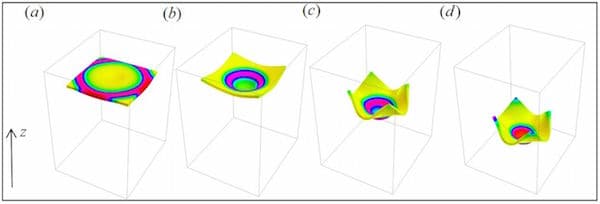Soft, Flexible Robots Could Move Using Internally Generated Power
A team of engineers from Swanson School of Engineering at the University of Pittsburgh have put their heads together to create a new 'synthetic polymer gel' that could be used to build soft robots which shift shape or undergo propulsion by processing the internally generated chemical energy. Whenever a common man imagines a robot (mostly thanks to sci-fi movies), we think of heavy bulky metallic parts connected to power source, which is basically a design that hinders mobility and limits their applications. The field of soft robotics has been booming over the past few years and putting a firm foot forward in its direction Pittsburgh University engineers hope that the new material should help develop a "soft robot" capable of so much more. Their work has been published a paper titled "Designing Dual-functionalized Gels for Self-reconfiguration and Autonomous Motion" in the journal Scientific Reports.
We know that in nature, animals have the ability to store and use their own energy. Moreover, everybody from a biological cell to us human beings are capable of rapid mechanical actions with expansion and contraction of muscles. This is not the case with robots. By mimicking these biological behavior, the soft robots of the future can be made to simultaneously change shape and move. The engineering team therefore decided to develop a computational model to design a new class of polymer gels (containing both spirobenzopyran [SP] chromophores and the ruthenium catalysts for driving oscillatory Belousov-Zhabotinsky [BZ] reaction) where structural re-configurations and internalised reactions are linked to produce autonomous motion, which can be directed with light.

Evolution of the SP-BZ gel in non-uniform light
Although this is not the first time that polymer chains have ben created with both the SP and BZ, the combination of "SP-BZ" gels is entirely new. These systems are different because they facilitate both: self-bending or folding as well as self-propelled motion.
Using these SP-BZ polymer gels, it is possible to develop small-scale soft robotics for microfluidic devices so as to perform multi-stage chemical reactions. If researchers are able to mimic biological systems in such a way that the robotic systems become capable of using their own stored energy to perform a function (similar to our metabolism function).
We have already began imagining flexible, squishy robots that are lightweight, can move freely (with a graceful motion) such that its energy source is a part of its design.
What are your thoughts about soft robotics and synthetic polymer gels used for their fabrication? Share with us in comments below.
Source: #-Link-Snipped-#
We know that in nature, animals have the ability to store and use their own energy. Moreover, everybody from a biological cell to us human beings are capable of rapid mechanical actions with expansion and contraction of muscles. This is not the case with robots. By mimicking these biological behavior, the soft robots of the future can be made to simultaneously change shape and move. The engineering team therefore decided to develop a computational model to design a new class of polymer gels (containing both spirobenzopyran [SP] chromophores and the ruthenium catalysts for driving oscillatory Belousov-Zhabotinsky [BZ] reaction) where structural re-configurations and internalised reactions are linked to produce autonomous motion, which can be directed with light.
Evolution of the SP-BZ gel in non-uniform light
Although this is not the first time that polymer chains have ben created with both the SP and BZ, the combination of "SP-BZ" gels is entirely new. These systems are different because they facilitate both: self-bending or folding as well as self-propelled motion.
Using these SP-BZ polymer gels, it is possible to develop small-scale soft robotics for microfluidic devices so as to perform multi-stage chemical reactions. If researchers are able to mimic biological systems in such a way that the robotic systems become capable of using their own stored energy to perform a function (similar to our metabolism function).
We have already began imagining flexible, squishy robots that are lightweight, can move freely (with a graceful motion) such that its energy source is a part of its design.
What are your thoughts about soft robotics and synthetic polymer gels used for their fabrication? Share with us in comments below.
Source: #-Link-Snipped-#
0
